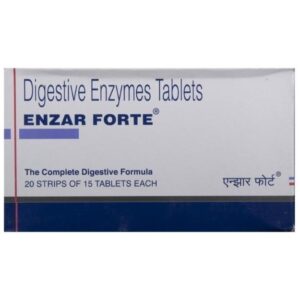PANCREATIN + SODIUM TAUROGLYCOCHOLATE + MALT DIASTASE
Pancreatin: Pancreatin is a medication comprised of a mixture of digestive enzymes derived from the pancreas, primarily amylase, lipase, and protease. It is commonly used to aid in the digestion of food in individuals with pancreatic enzyme insufficiency, which may occur due to conditions like chronic pancreatitis, cystic fibrosis, or after pancreatic surgery.
The mechanism of action of Pancreatin is to replace the natural digestive enzymes that the pancreas is unable to produce or secrete in sufficient quantities. Amylase breaks down carbohydrates (starches and sugars), lipase digests fats, and protease helps in the digestion of proteins. By supplementing these enzymes, Pancreatin ensures the proper digestion and absorption of nutrients in the small intestine.
Pancreatin is typically available in tablet or capsule form and is taken orally with meals or snacks. The dosage is usually determined based on the severity of pancreatic insufficiency and the amount of ingested fat. The recommended starting dose for adults is usually 25,000 to 50,000 USP lipase units per meal, with adjustments based on response and individual needs. Children usually require lower doses, which should be determined by a healthcare professional.
Like any medication, Pancreatin may cause side effects. Common side effects include gastrointestinal symptoms such as diarrhea, nausea, stomach cramps, and bloating. These side effects generally subside with continued use or by adjusting the dosage. In rare cases, Pancreatin may cause allergic reactions, including rash, itching, swelling, severe dizziness, or difficulty breathing. If any severe side effects occur, immediate medical attention should be sought.
It is important to note that Pancreatin should not be used by individuals who are allergic to pork, as the enzymes are derived from pig pancreas. Additionally, certain medications, such as antacids or proton pump inhibitors, may interfere with the effectiveness of Pancreatin, so it is essential to consult a healthcare professional before starting or adjusting the dosage.
Sodium Tauroglycocholate: Sodium Tauroglycocholate (STGC) is a bile acid that is commonly used as an ingredient in pharmaceutical formulations for enhancing drug absorption and solubility. It is a naturally occurring component of bile and plays a crucial role in the digestion and absorption of fats in the intestine.
The primary use of Sodium Tauroglycocholate is as an excipient in oral drug formulations to improve the bioavailability of poorly soluble drugs. It acts as a surfactant, aiding in the formation of micelles, which enhance the solubility and absorption of drugs in the gastrointestinal tract. Additionally, STGC has been found to have antimicrobial properties and is sometimes used as a preservative in certain formulations.
The dose of Sodium Tauroglycocholate varies depending on the specific formulation and the drug it is being used in conjunction with. It is generally administered orally, and the recommended dose is typically provided by the manufacturer or as prescribed by a healthcare professional.
Sodium Tauroglycocholate is generally considered safe when used as directed. However, some side effects may occur, although they are usually mild and transient. Common side effects may include gastrointestinal disturbances such as bloating, abdominal discomfort, nausea, and diarrhea. Rare cases of allergic reactions, including rash and itching, have been reported. If any adverse effects occur, it is important to discontinue use and consult a healthcare professional.
Overall, Sodium Tauroglycocholate is a useful excipient in pharmaceutical formulations to enhance drug solubility and absorption, thereby improving the efficacy and bioavailability of orally administered drugs.
Malt Diastase: Malt diastase is an enzyme used primarily as a digestive aid. It is derived from malt and contains enzymes, mainly α-amylase and glucoamylase. These enzymes help in the breakdown of complex carbohydrates into simpler sugars, such as glucose and maltose, which are more easily digestible.
The mechanism of action of malt diastase involves the catalysis of the hydrolysis reaction, which breaks the chemical bonds between the glucose units in complex carbohydrates. This process converts the complex carbohydrates into simpler sugars, facilitating their absorption and utilization by the body.
Malt diastase is commonly available in tablet or liquid form and is taken orally with meals. The recommended dose may vary depending on the individual’s age, the severity of the digestive problem, and the specific brand of the drug. It is generally advised to follow the instructions provided by the healthcare professional or as stated on the product label.
As an over-the-counter digestive aid, malt diastase is generally considered safe with minimal side effects. Some individuals may experience gastrointestinal discomfort, such as bloating, diarrhea, or gas, especially when taken in larger doses. In rare cases, allergic reactions may occur, including rash, itching, or swelling.
Although malt diastase is generally well-tolerated, it’s important to consult a healthcare professional before starting any new medication, especially if you have any pre-existing medical conditions or if you are taking other medications that may interact with malt diastase.

